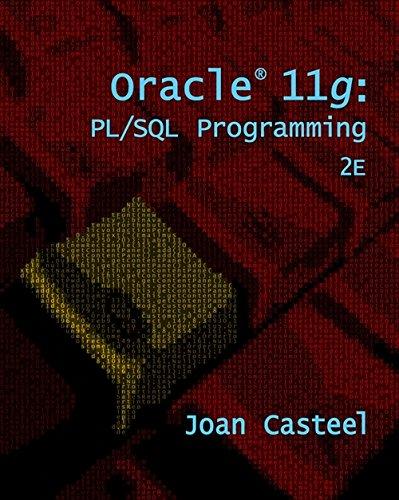Answered step by step
Verified Expert Solution
Question
1 Approved Answer
C++ Go through this drill step by step to build up your solution You can use any IDE of your choosing, such as CodeBlocks or
C++
- Go through this drill step by step to build up your solution
- You can use any IDE of your choosing, such as CodeBlocks or Nano
- Test each step as you go by entering at least three pairs of values. More values would be better.
- The completed program through the last step will be checked for correct output and scored
- Be sure to match the formatting of the tester to receive full points. It will indicate where formatting does not match.
- Command prompts are omitted to simplify testing
- You may turn your code in as many times as you like, it will keep your highest score
- Be sure to match the formatting of the tester to receive full points. It will indicate where formatting does not match.
(1)
- Write a program that consists of a while-loop that reads in one double each time around
- Each time through the loop write out the value entered
- Define two variables to keep track of which is the smallest and which is the largest value you have seen so far
- If its the smallest or tied for the smallest so far, write The smallest so far after the number.
- If it is the largest or tied for the largest so far, write The largest so far after the number.
- Exit the program when a terminating character is entered, such as '|', or if the stream fails. The easiest way is to just check the status of cin after reading:
while(cin >> num) { ... } (2)
- Add a unit to each double entered; that is, enter values such as 10cm, 2.5in, 5ft, or 3.33m.
- Accept the four units: cm, m, in, ft. Assume conversion factors 1m == 100cm, 1in == 2.54cm, 1ft == 12in.
- Read the unit indicator into a string. You may consider 12 m (with a space between the number and the unit) equivalent to 12m (without a space). Keep in mind that cin will read them the same way:
while(cin >> num >> unit) { ... } - After converting, each time through the loop write out the value entered in meters
(3)
- Reject values without units or with illegal representations of units, such as y, yard, meter, km, and gallons.
- In this case, output ```Invalid unit " and exit the program
(4)
- Keep track of the sum of values entered (as well as the smallest and the largest) and the number of values entered.
- When the loop ends, print
- the smallest
- the largest
- the number of values
- the sum of values.
- Note that to keep the sum, you have to decide on a unit to use for that sum; use meters.
(5)
- Keep all the values entered (converted into meters) in a vector. At the end, write out those values.
(6)
- Before writing out the values from the vector, sort them (that will make them come out in increasing order).
Sample execution:
1.5m 1.5m The smallest so far The largest so far 1.5cm 0.015m The smallest so far 1.5in 0.0381m 1.5ft 0.4572m Smallest: 0.015, largest: 1.5, total: 2.0103 Values: 0.015 0.0381 0.4572 1.5
Step by Step Solution
There are 3 Steps involved in it
Step: 1

Get Instant Access to Expert-Tailored Solutions
See step-by-step solutions with expert insights and AI powered tools for academic success
Step: 2

Step: 3

Ace Your Homework with AI
Get the answers you need in no time with our AI-driven, step-by-step assistance
Get Started


